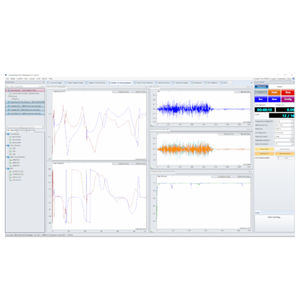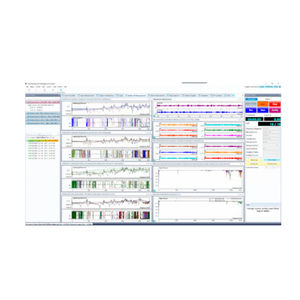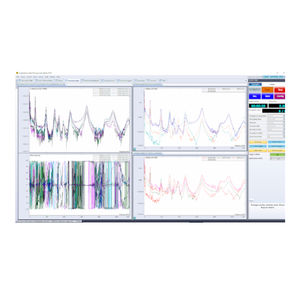
- Robotics - Automation - Industrial IT
- Industrial Software
- Control software
- CRYSTAL INSTRUMENTS

- Company
- Products
- Catalogs
- News & Trends
- Exhibitions
Monitoring software designvibration testcontrol

Add to favorites
Compare this product
Characteristics
- Function
- monitoring, design, vibration test, control, control, swept sine vibration testing
- Type
- real-time
Description
The Spider Swept Sine vibration testing system provides precise, real-time, multi-channel control using sine waveform. Swept Sine supports up to 512 input channels. Users can enable up to 128 channels for control and notching while designating the remaining as monitoring and time data recording channels. The recording option records time stream data at the full sample rate on all input channels, regardless of the total channel number. A unique hardware design provides a fast loop time of less than 10 ms. Black Box mode allows a user to operate the vibration test controller without a connected computer.
Notching and Limiting
Limiting is applied to control or monitor channels. Three types of limiting are available in Sine Control: frequency domain, time domain, and advanced limit. Two types of limiting are available in Multi-sine control: frequency domain and time domain.
Frequency domain limiting is spectrum limiting. Limit types are notching limit, abort limit, and alarm limit. Time domain limiting compares raw data or the RMS value of input channels to the high limit. The occurrence of exceeding the high limit is one of the system events to which desirable actions can be added. Advanced limit includes summed channel notching and vector notching.
A summed virtual channel is defined as the weighted average of raw time stream signals from multiple input channels. The Notch profile of a summed channel is defined in the frequency domain.
A vector RRS signal is defined as the vector sum of raw time stream signals from three input channels. The notch profile of a vector RRS signal is defined in the frequency domain as well.
VIDEO
Catalogs
No catalogs are available for this product.
See all of CRYSTAL INSTRUMENTS‘s catalogsOther CRYSTAL INSTRUMENTS products
Environmental and Structural Testing
Related Searches
- Automation software solution
- Management software solution
- Analysis software solution
- Process software solution
- Windows software solution
- Computer-aided design software
- Control software solution
- Real-time software solution
- Online software
- Design software solution
- 3D software solution
- Monitoring software solution
- Interface software
- Measurement software
- Industrial software solution
- Quality software
- Visualization software solution
- Automated software
- Network software solution
- Machine software
*Prices are pre-tax. They exclude delivery charges and customs duties and do not include additional charges for installation or activation options. Prices are indicative only and may vary by country, with changes to the cost of raw materials and exchange rates.





























